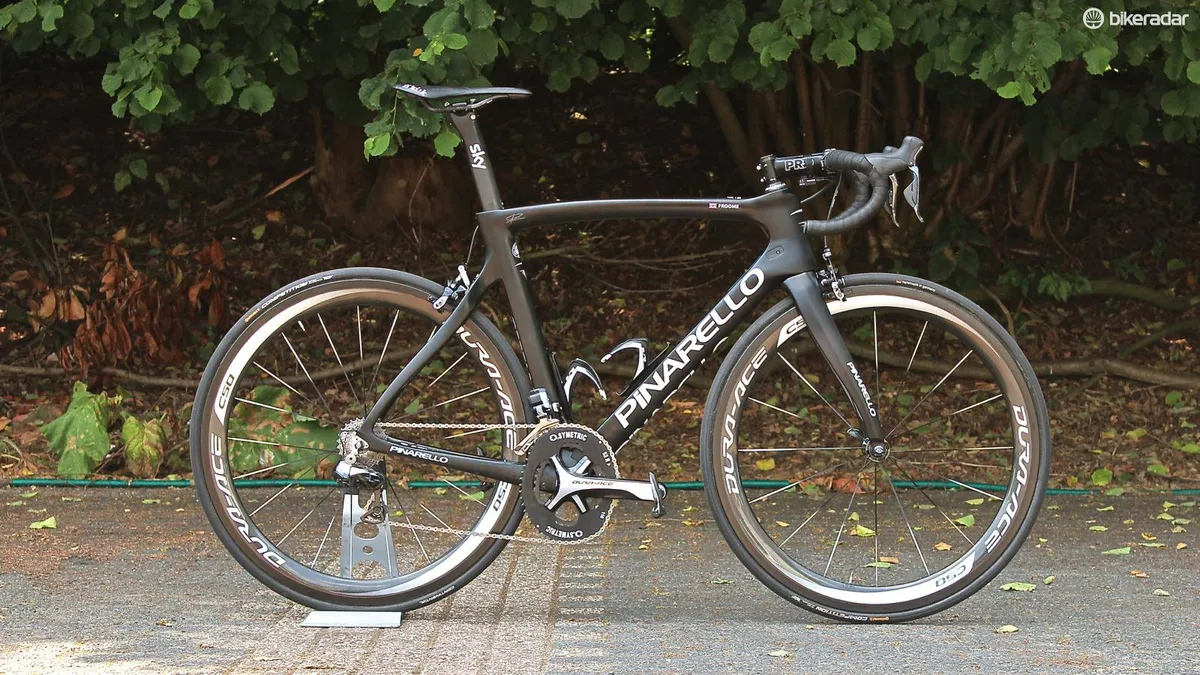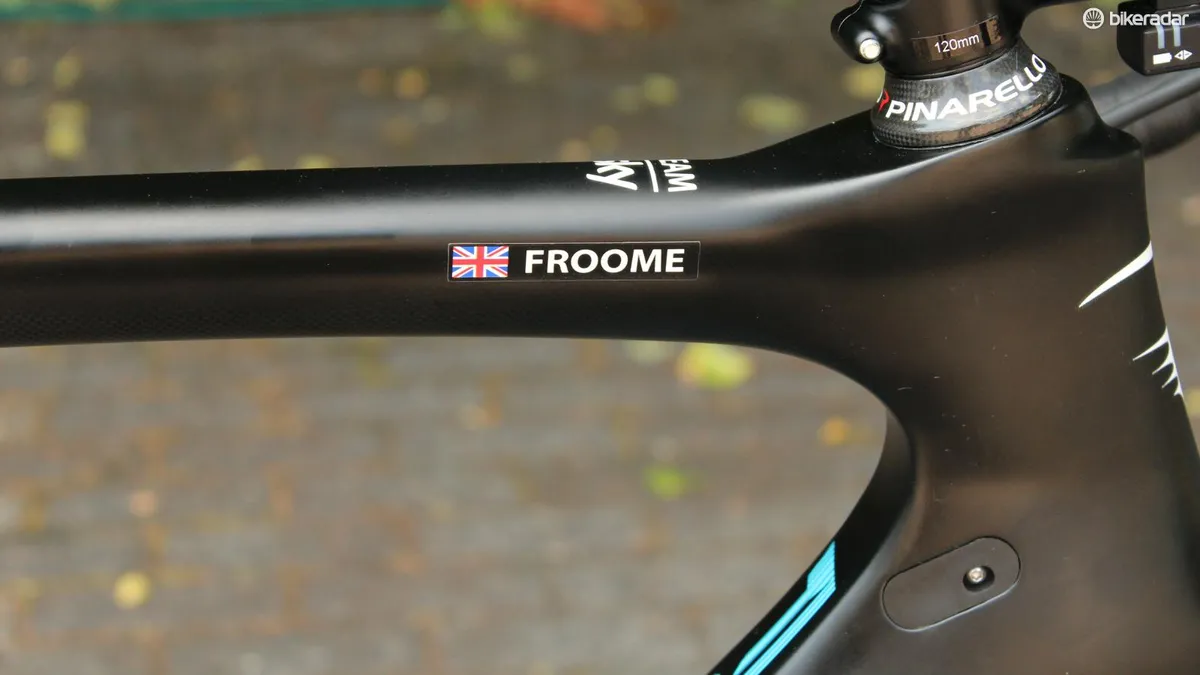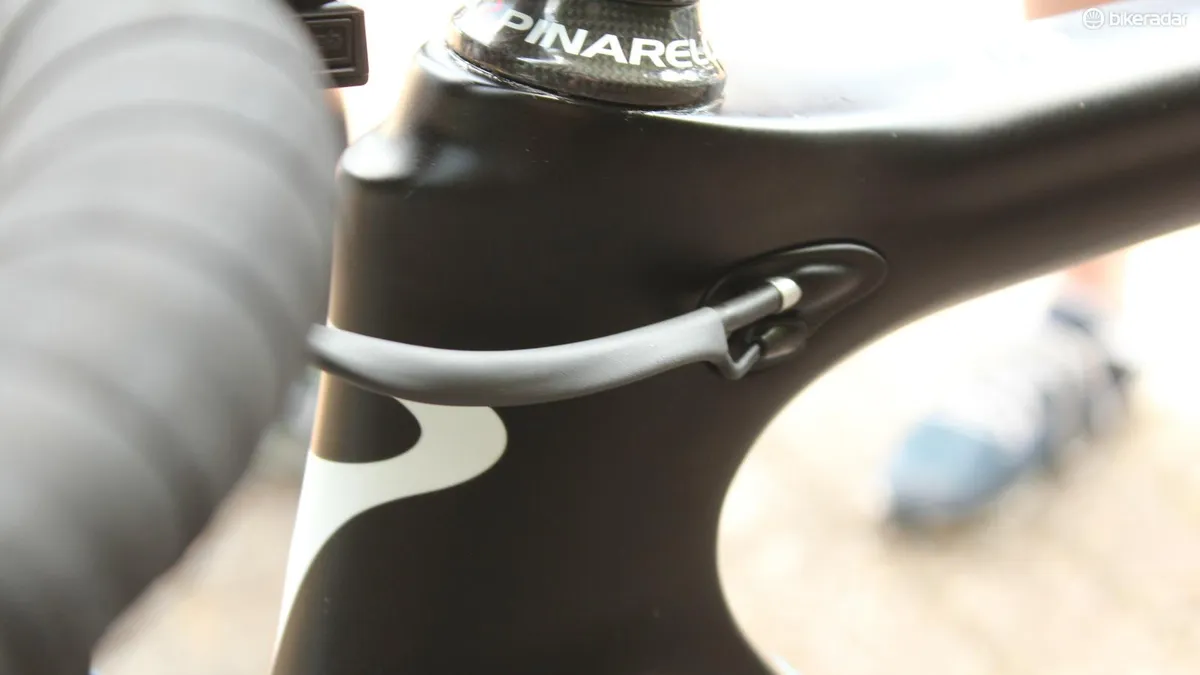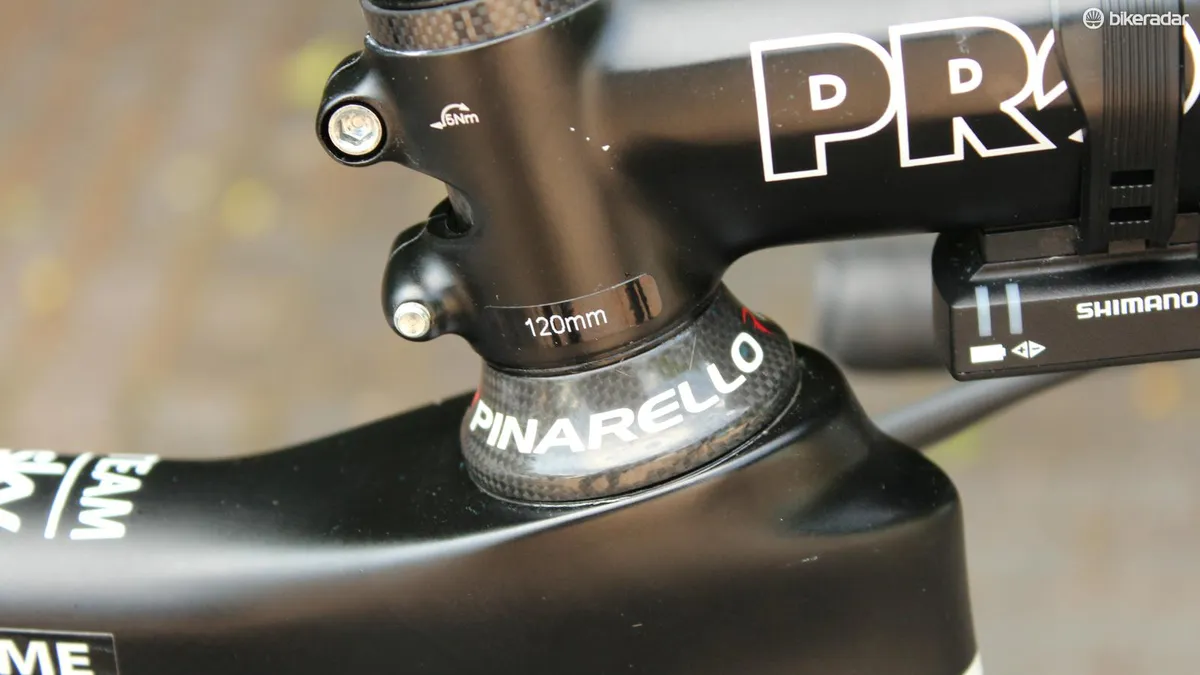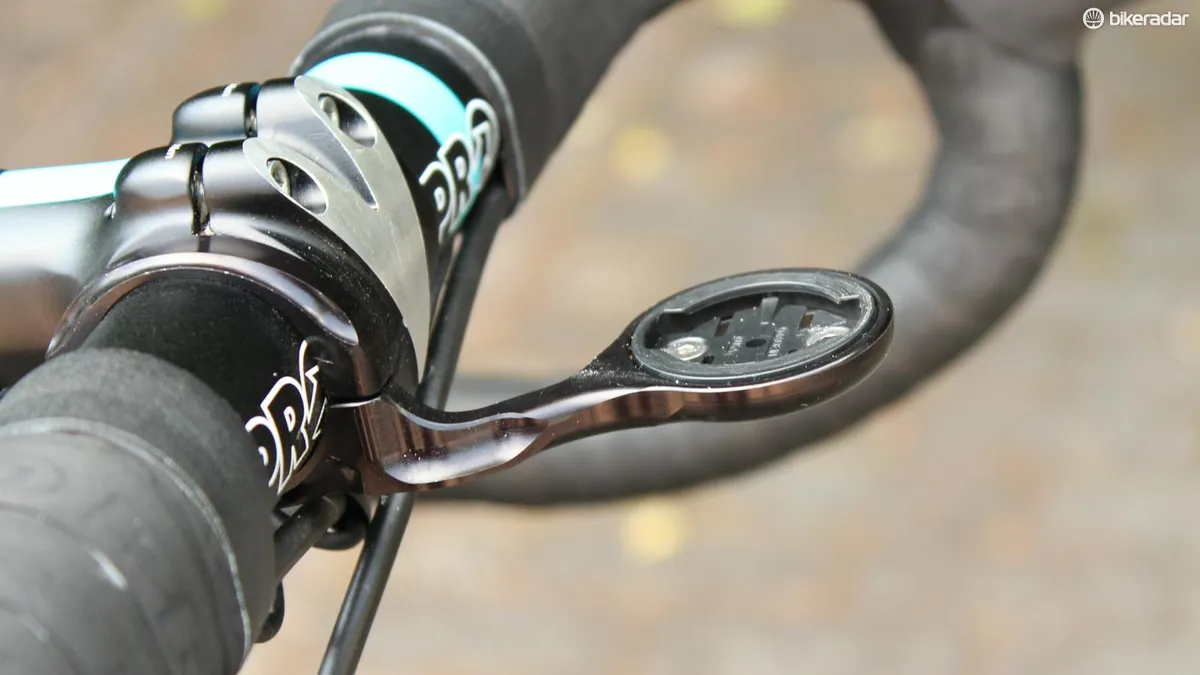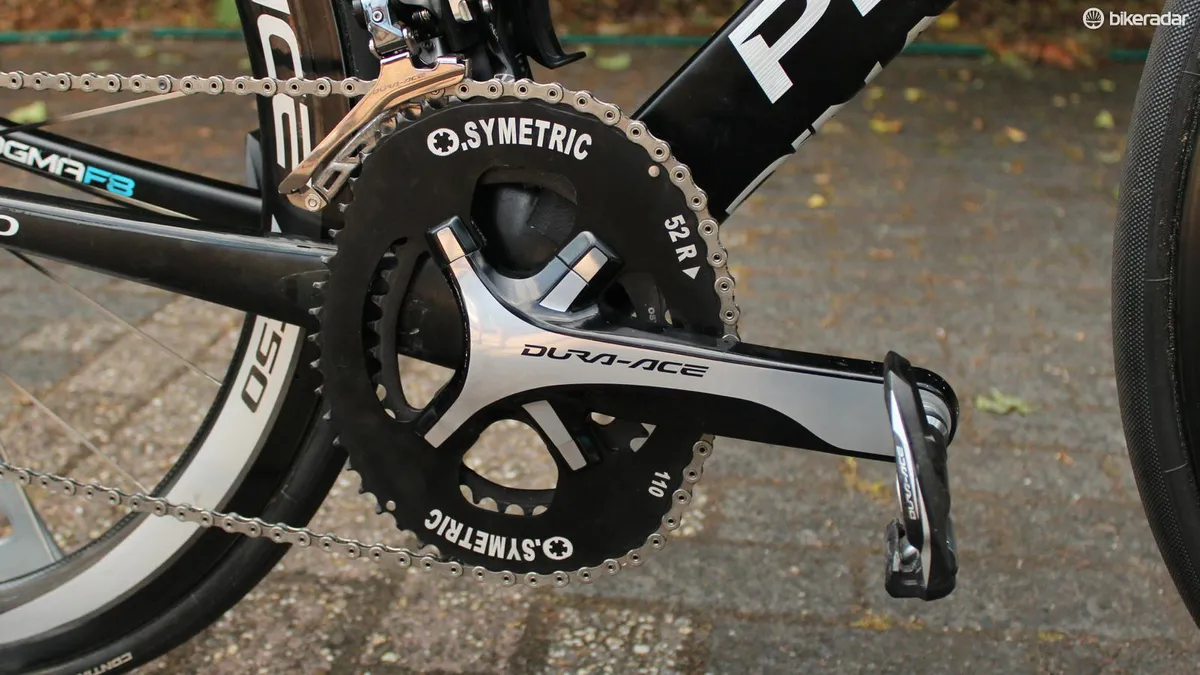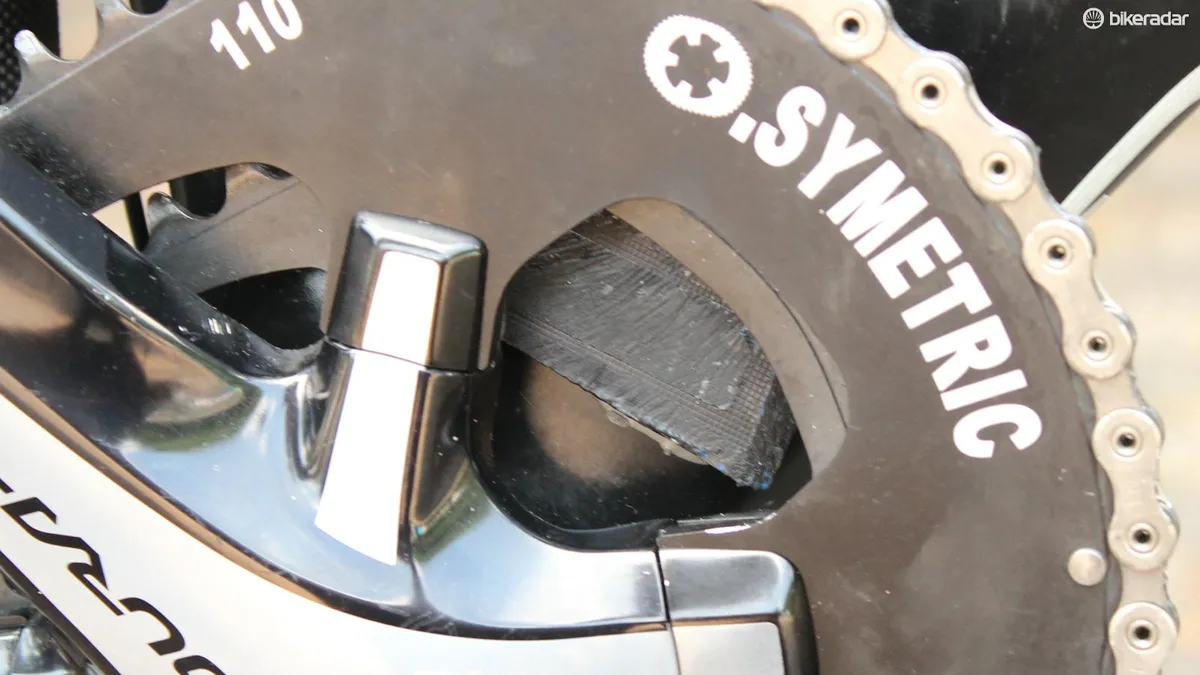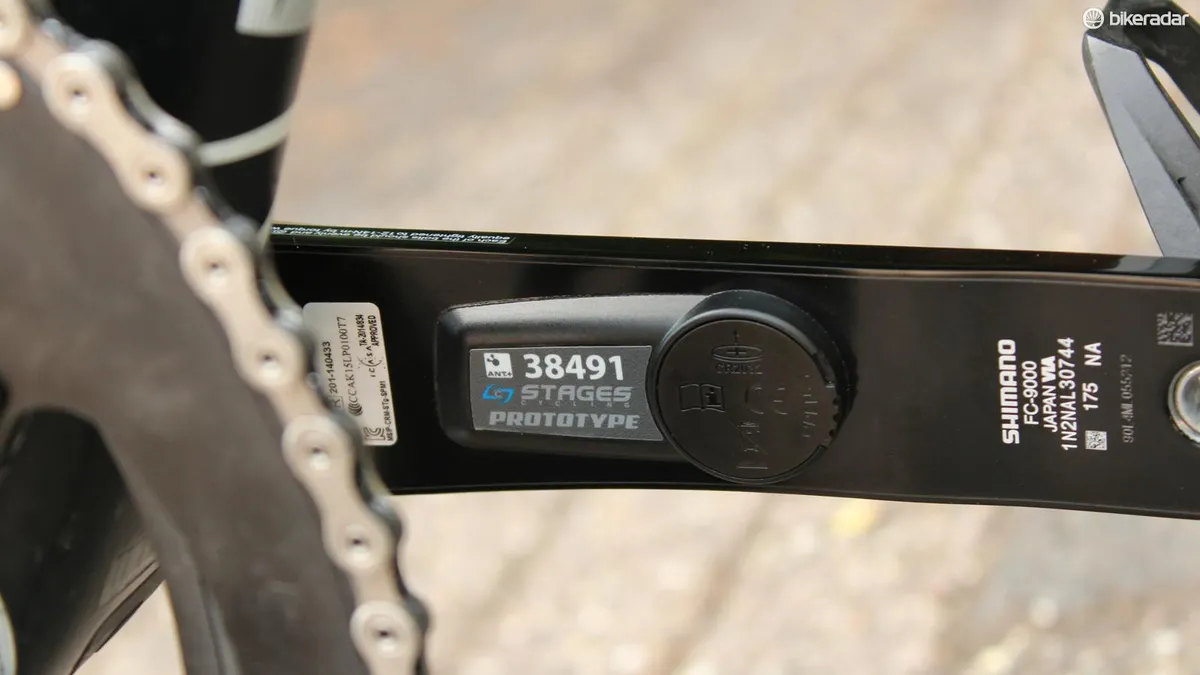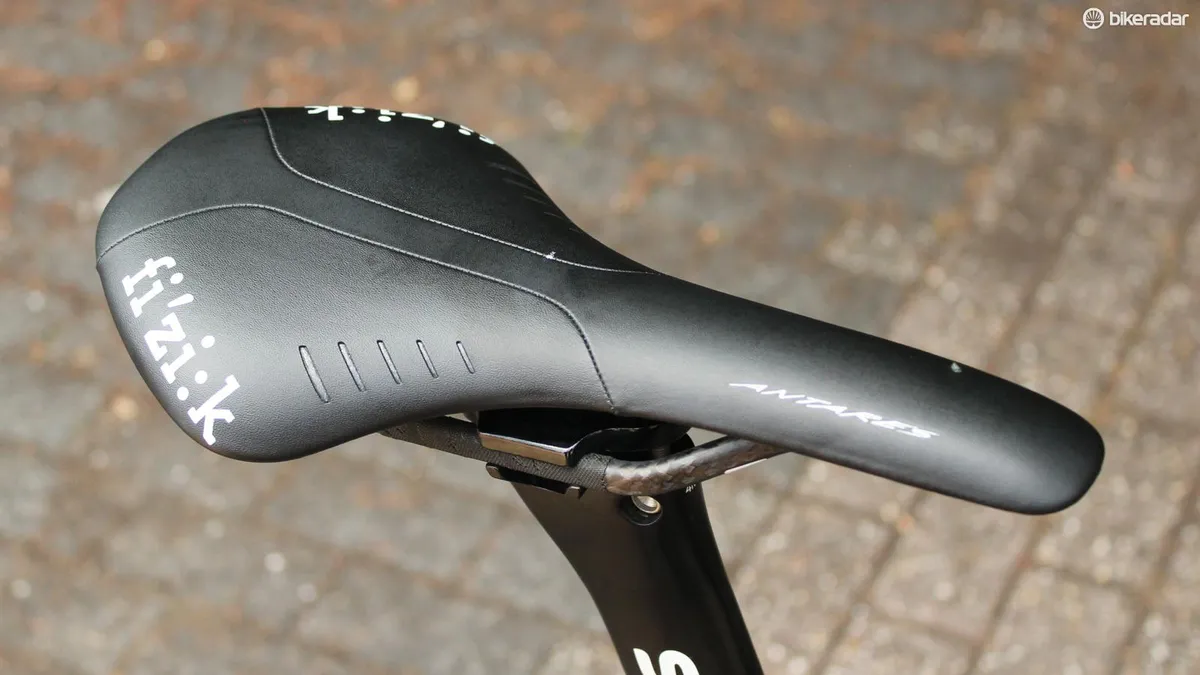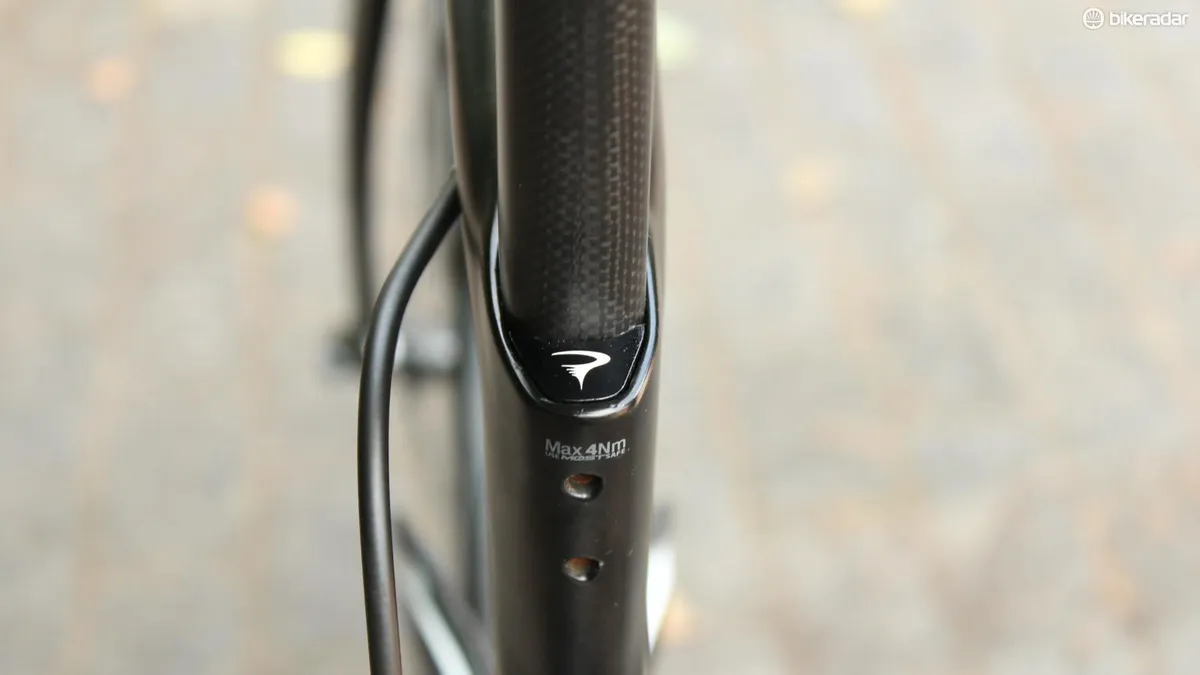Chris Froome rode onto the Champs Élysées and into the overall Tour de France victory astride a Pinarello bathed in yellow paint with chainrings covered over with black tape. Here we take a look at his machine from the beginning of the 2015 Tour de France, before the paint and tape. We also talk to power-meter sponsor Stages Cycling about Team Sky's claim that non-round rings can cause power meters to read six percent high.
Team Sky enjoys a reputation as the most fastidious squad in the WorldTour, and the team's mechanics do nothing to dispel this perception. BikeRadar watched Sky bikes being assembled, cleaned and tuned before the Tour kicked off, and we were impressed by some of the detail work, such as small drops of superglue being laid underneath the ends of the handlebar tape, allowing for minimal use of finishing tape while keeping the wrap job showroom-perfect during racing.
Like all Team Sky riders, Froome had three Pinarello Dogma F8s ready to go at all times during the race. His #1 bike was what he started each day on, with the #2 and #3 bikes on his team cars in the caravan behind. Each bike is identical.
Sky mechanics mark two points on the top of each saddle for consistent measurement. There is no eyeballing here. Similarly, there is no taking component manufacturers at their word; each Shimano PRO stem is measured and labeled. As with most other brands, PRO stems come in 10mm increments. Sky has found there to be variances of a few mm in stems, though, and marks them accordingly.
Froome's trademark component is his O.Symetric chainring setup. While mechanics dutifully taped over the logos during the race, there is no mistaking the oblong shape. Proponents of non-round rings argue that the design eliminates the deadspot in a rider's pedalstroke and adds leverage for the the downward part of the stroke, resulting in more power for the same effort.
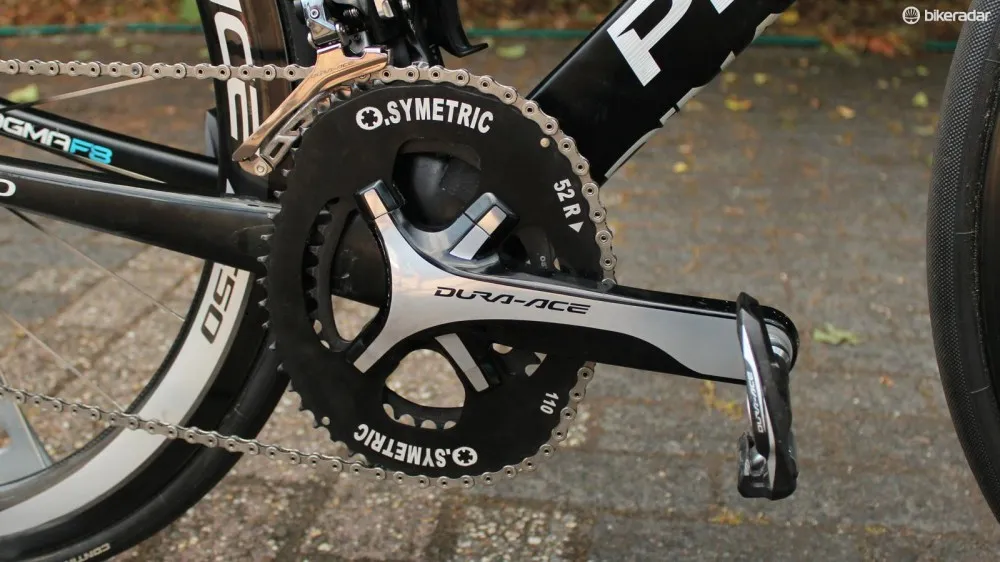
Froome's O.Symetric rings allegedly provide a more efficient delivery of pedal power
A six percent boost in power?
Froome's chainrings and power were a topic of debate as the Tour concluded, with critics expressing skepticism over his wattage numbers on stage 10. After some in the media insinuated that Froome must have been doping, Sky published his power data. Team coach Tim Kerrison said that Froome's raw numbers must be adjusted by six percent because of the O.Symetric rings, which cause crank-based power meters to read high.
Froome's power was measured by a Stages left-crank meter. Stages engineer Andy Lull backed up Kerrison, and said that in his testing the non-round rings "do not seem to allow the rider to produce more power at the rear wheel through a mechanical advantage, but rather produce a higher power reading from crank-based power meters."
"I can’t speak to the biomechanical efficiencies or psychological advantages of non-round rings, only to the phenomenon of the fluctuating velocity biasing the crank-based power measurement," Lull said.
Lull tested older O.Symetric rings with a Stages and an SRM, using a Wahoo KICKR to represent the actual rider output. The KICKR was used to hold a constant power and the measurements of the two crank based meters were compared against the baseline wattage using both sets of rings. Lull found "that the power was reportedby both the Stages and SRM as 4.5 to five percent higher than when a standard round chainring was used."
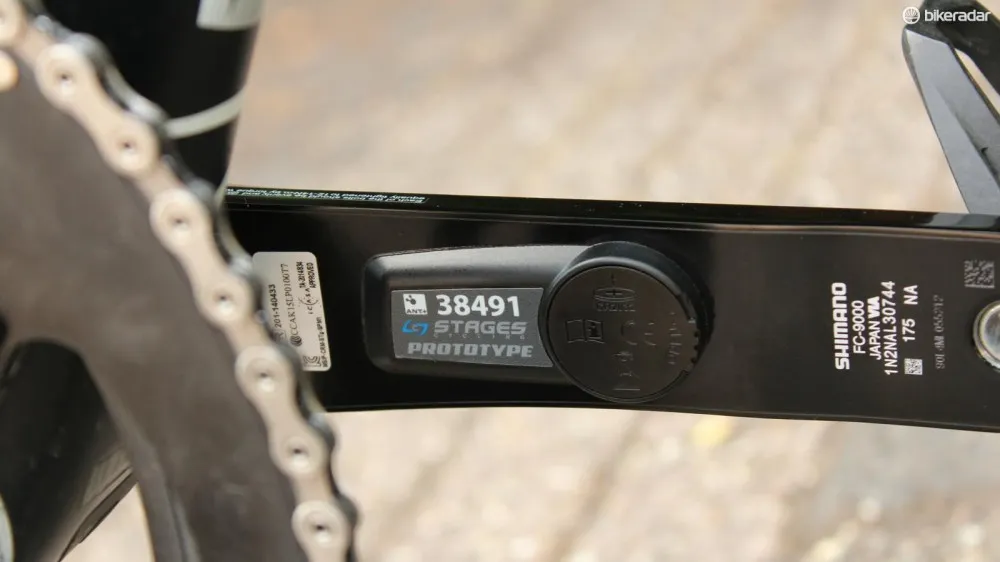
Team Sky and Stages Cycling declined to comment on this prototype power meter
"What is happening is that with a round chainring the crank velocity is reasonably consistent under load and governed by the inertia and resistance of the bike/rider combination," Lull said. "When force measurements are taken at a constant interval each is equally weighted in the average measurement for the rotation and thus produce an accurate power reading.
"When the non-round rings are used the crank velocity varies by design of the rings in that they travel slower in the areas of high torque and faster in ‘dead spots’ or areas of low torque," Lull continued. "In this condition the constant interval at which the force is measured allows more readings to be made in the high torque (slow velocity) region and less readings in the low torque (high velocity) region and this gives more weight to the high torque measurements and thus will bias the average measurement for the rotation and produce a higher than expected power value.
"My numbers are slightly lower than the six percent quoted by Team Sky, but the chainrings I tested were older models and I believe the ones Chris use are more aggressive and could in fact easily inflate the numbers another one to 1.5 percent due to a greater fluctuation in velocity," he concluded.
Complete bike specifications
- Frame: Pinarello Dogma F8, 56cm
- Fork: Pinarello Dogma F8,
- Stem: Shimano PRO Vibe, 120mm, 10-degree
- Handlebar: Shimano PRO Vibe 7S, 40cm
- Brake calipers: Shimano Dura-Ace 9000
- Front derailleur: Shimano Dura-Ace Di2 9070
- Rear derailleur: Shimano Dura-Ace Di2 9070
- Shifters: Shimano Dura-Ace Di2 9070
- Cassette: Shimano Dura-Ace 9000, 11-25
- Chain: Shimano Dura-Ace 9000
- Crankset: O.Symetric rings on Shimano 175mm cranks
- Power meter: Stages
- Pedals: Shimano Dura-Ace
- Wheels: Shimano Dura-Ace C50
- Tubulars: Continental Competition, 25mm
- Saddle: Fizik Antares
- Other: K-Edge Garmin mount, K-Edge chain catcher, custom frame guard, Shimano Di2 climbing switch with body removed
